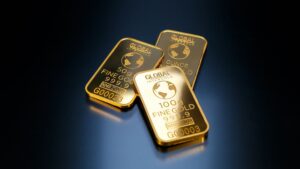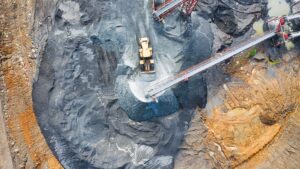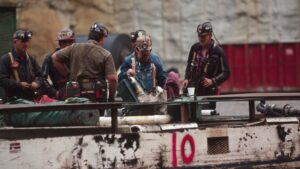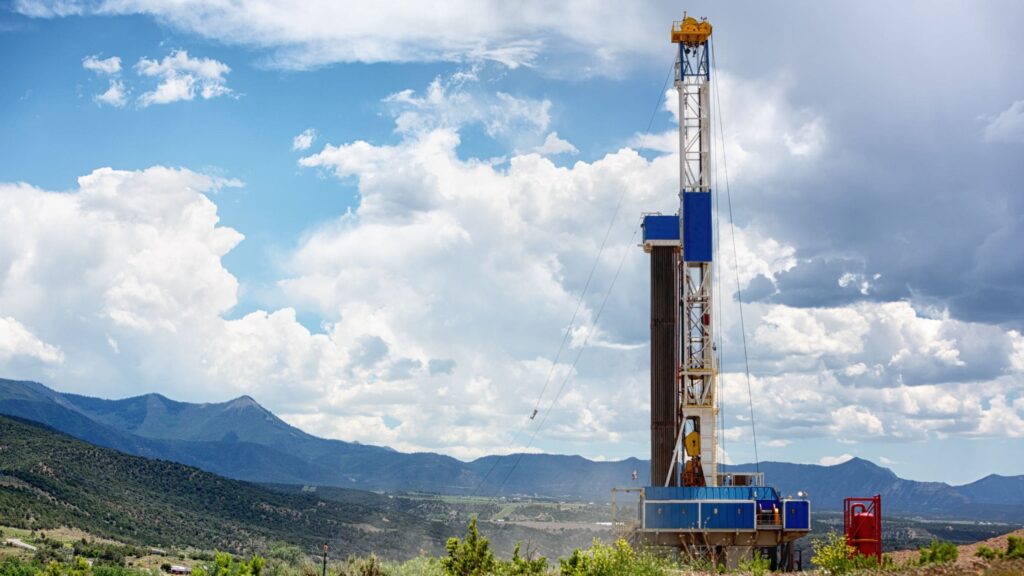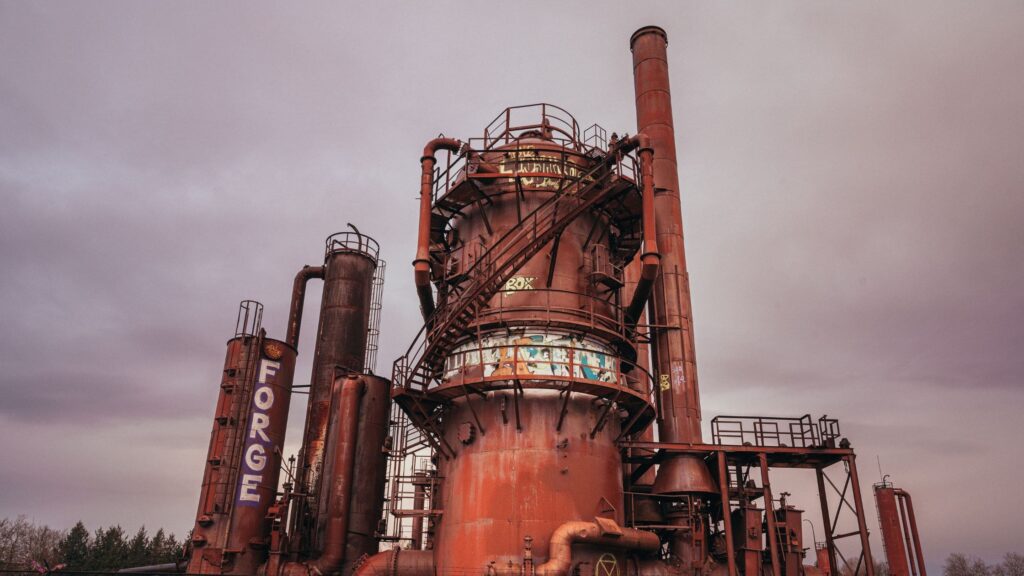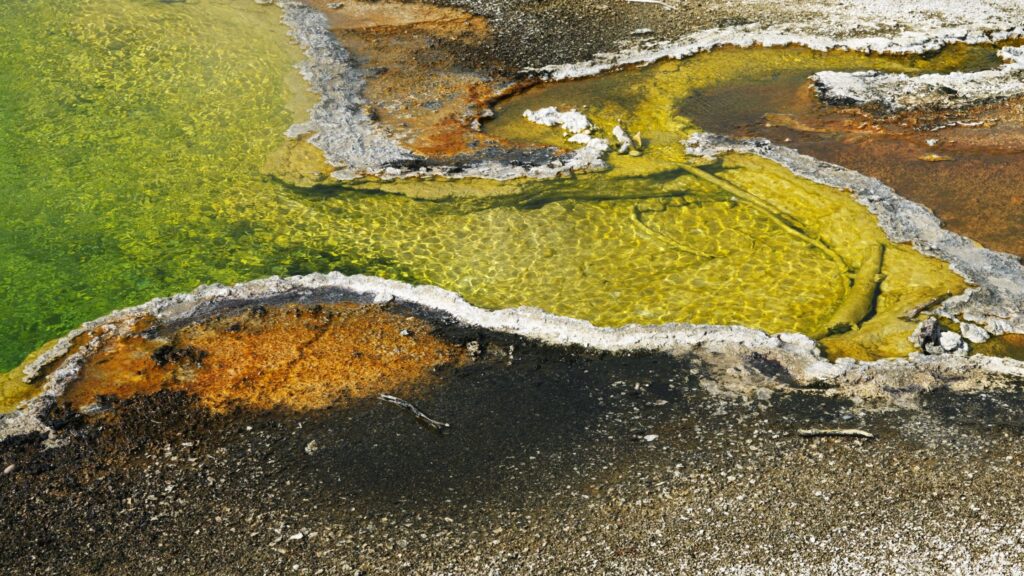In this post, we will explore the definition of a mineral, its properties, and how it is different from other naturally occurring substances. So whether you are a geology enthusiast or simply curious about the world we live in, keep reading to learn more about this fascinating topic!
What is a Mineral?
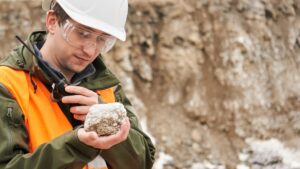
A mineral is a naturally occurring homogeneous solid. It has a characteristic chemical composition and an atomic arrangement that is highly ordered. Typically, a mineral is formed by inorganic processes.
What are the Mandatory Characteristics for Something to be Labeled Mineral?
There are several mandatory characteristics and physical properties (according to the International Mineralogical Association) that must be present for something to officially be labeled a mineral. It must be:
- Naturally occurring: In other words, a mineral must be formed by natural geological processes. These might include metamorphism, the cooling of lava or magma, or precipitation from solutions. Minerals are never man-made.
- Inorganic: Minerals are inorganic. They do not come from biological processes or living organisms. Organic compounds like lipids, carbohydrates, and proteins are not minerals.
- Solid: Under normal temperatures and pressures, minerals exist as solids on the Earth’s surface. Amorphous substances, liquids, and gases are not minerals.
- Specific chemical composition: To be classified as a mineral, there must be a characteristic chemical composition that is expressed in the form of a chemical formula. A mineral’s composition may vary within certain limits for certain minerals such as a solid solution series, but the composition remains consistent enough for it to be identified as a mineral.
- Crystalline internal structure: Minerals have a unique arrangement of molecules, ions, or atoms, typically in a repeating pattern. This pattern forms a crystal lattice. The crystal structure of minerals affects certain physical properties of minerals including specific gravity, cleavage, and hardness.
What is the Difference Between a Rock and a Mineral?
Rocks and minerals are two terms that are often used interchangeably, but they actually have distinct differences. A mineral is a naturally occurring inorganic solid substance with a specific chemical composition and a crystal structure. On the other hand, a rock is a naturally occurring aggregate of minerals or mineraloids.
In simpler terms, minerals are the building blocks that make up rocks. Rocks can be made up of one or several different types of rock forming minerals, and they are classified based on their origin, texture, and mineral composition.
Another important difference between rocks and most minerals is their formation. Minerals are formed through natural geological processes, such as crystallization from magma or precipitation from mineral-rich solutions. Rocks, on the other hand, are formed through a combination of geological processes, including heat, pressure, erosion, and weathering.
Where Does the Word “Mineral” Come From?
The word “mineral” comes from the Latin word “mineralis,” which means “something mined.” The Latin term “minera” referred to a mine, and “mineralis” was used to describe anything that was found in a mine, including precious metals, rocks, and other materials.
The use of the term “mineral” in its current geological sense dates back to the 16th century when German mineralogist Georgius Agricola used it to describe substances found in the earth that were distinct from plant or animal matter.
The concept of minerals as a distinct category of substances with specific physical and chemical properties continued to develop over time, leading to the modern scientific understanding of minerals that we have today.
How are Minerals Formed?
Minerals are formed by natural geological processes, of which there are a few. For example:
Crystallization from Magma
Magma is found beneath the Earth’s surface. It’s a molten rock that’s rich in a variety of chemical elements. Over time, the magma cools and solidifies. When this happens the elements in the magma combine to form minerals.
How quickly the magma cools determines the crystal structure and the type of mineral. If the magma cools slowly, it forms large, coarse-grained minerals. Fast cooling, on the other hand, results in small, fine-grained minerals.
Precipitation from Aqueous Solutions
It’s also possible for minerals to form from the precipitation of dissolved elements in water. Should the concentration of the dissolved elements exceed their saturation point, crystalization starts to happen and the elements form solid mineral deposits.
There are a variety of environments in which this process can take place, such as hot springs, ocean water, or groundwater.
Halite, gypsum, and the mineral calcite are some of the common minerals formed through the process of precipitation.
Solid-State Transformation (Metamorphism)
Another way for minerals to form is through solid-state transformations. This process takes place when pre-existing minerals undergo structural and chemical changes, generally as a result of changes in pressure and temperature.
This process is called metamorphism and can lead to new minerals forming. Examples include kyanite, staurolite, and garnet.
Biomineralization
Biomineralization occurs when living organisms produce minerals as part of their biological functions. An excellent example is the calcium carbonate shells that mollusks create. Similarly, corals form limestone skeletons using the same process.
The minerals might be produced by the living organism for a variety of reasons, such as mechanical strength, protection, or structural support.
Evaporation
Minerals can also be formed from the evaporation of water which contains dissolved elements. However, it generally only happens in arid environments.
As the water evaporates in the heat, the minerals solved in the water become concentrated. Eventually, they reach a point whereby they become crystal structures and form solid deposits. Salt pans and salt flats are two classic examples of evaporation in action. The minerals formed are gypsum and halite.
What is the Structure of Minerals?
The classification of minerals is based on three main criteria: chemical composition, physical properties, and crystalline/crystal structure.
Chemical Composition
- All minerals are composed of various chemical elements. These include oxygen, silicon, aluminum, iron, calcium, sodium, potassium, and magnesium, among others.
Crystal Structure
- The crystal structure of a mineral is the three-dimensional, regular, or ordered arrangement of chemical units and anionic groups.
- A limited number of different crystal shapes have been found in nature. Currently, there are only 7 crystal systems. All natural crystals can be placed in one of these 7 crystalline structure systems.
Physical Properties of Minerals
- Color – In general, most minerals have a distinctive color when viewed in visible light. Some minerals are variable in color, however, the powdered form is always the same.
- Lustre – Lustre is the reflection of light from the mineral surface. It is typically described by its intensity and quality. Common descriptions include glassy, non-metallic, or metallic.
- Hardness – Hardness is a measure of how resistant a mineral is to scratching. To measure hardness, the mineral is scratched against another substance of known hardness. Measurements are made on the Mohs Scale. 1 is the softest while 10 is the hardest.
- Cleavage – Cleavage refers to the ease with which a mineral breaks along weak planes. It can occur in several directions and at various angles.
- Fracture – This is a term used when a mineral breaks but not in a flat or even way. Fracture can be uneven, fibrous, or conchoidal (curved, shell-like).
- Density – Density is measured by the relative weight of a mineral to water. It is also known as specific gravity or SG. Specific gravity is one of the most constant, important, and quantifiable properties a mineral has.
- Streak – When a mineral is rubbed across an unglazed ceramic plate, it creates a powdered streak. This is a very useful identity test.
- Magnetism – Magnetism is a property of iron-rich minerals, one of the most magnetic of which is magnetite. Magnetism is a mineral’s ability to be attracted to a magnet.
- Crystal form – Minerals tend to have different crystal structures and this is what makes them different minerals. The shape of the mineral’s crystals is determined by the mineral’s internal atomic structure. Observing the shapes of the crystals is one of the best ways to classify and distinguish between different minerals.
- Fluorescence – Some minerals are fluorescent. In other words, they emit visible light when exposed to ultraviolet light.
- Taste – Certain minerals have a very distinctive taste. For example, halite, a rock salt, tastes salty.
- Odor – Certain minerals have a very distinctive smell. For example, the mineral sulfur smells similar to rotten eggs.
- Refractive index – When light passes through certain minerals, it bends or refracts. How much the light bents is expressed using a refractive index.
- Double refraction – Some minerals can split light into two rays and this is known as double refraction.
- Specific gravity – This is a figure that represents the ratio of the density of a mineral compared with an equal volume of water.
- Tenacity – Tenacity describes how a mineral responds to mechanical-induced changes of shape or form. It describes a mineral’s resistance to breaking or deforming. It measures a mineral’s ability to be flattened into sheets, known as malleability, or its tendency to break into small pieces, which is known as brittleness.
- Elasticity – This is how quickly a mineral can return to its original shape after being deformed. It’s possible it might not be able to return to its original shape.
- Conductivity – This refers to a mineral’s ability to conduct heat or electricity.
- Piezoelectricity – Some minerals can generate an electric charge when under pressure. This is known as piezoelectricity.
- Weight and density: Minerals might have the same volume, but that doesn’t necessarily mean they’ll have the same weight. A mineral’s weight depends on its elements and their density, or how close they’re packed together. Density is measured by its weight in relation to water. It is referred to as its specific gravity. This measure is one of the most important, quantifiable, and constant properties of a mineral.
- Radioactivity: Radioactivity is one of the rarer properties and is found in minerals that contain radioactive elements. Radioactive elements might be a defining constituent. Examples include uranium in uraninite, carnotite, and autunite. The radioactive elements might also be present as trace impurities. Zircon is a good example.
What are the Different Classifications of Minerals?
Minerals have been classified in many ways over the years, going back to Theophrastus in 315 BCE. Another early classification was given by Carl Linnaeus in 1735.
Variety, mineral species, series, and group determine the modern classification of minerals. Minerals can be neatly and quickly divided into two categories, based on their crystalline form, chemical composition, and structure. The two main categories are metallic and non-metallic.
Metallic minerals include those created by various metals reacting with certain other elements. These minerals tend to have physical qualities that are similar to metals, for example, they shine. Examples of metallic minerals include hematite, pyrite, iron ore, magnetite, and bauxite.
Non-metallic minerals contain no metals in their chemical compositions and have a non-metallic shine or gloss. Examples of this type of mineral include mica, gypsum, limestone, and silica.
It is possible to divide minerals into smaller categories as follows.
Silicates
Silicate minerals are one of the largest groups and the most abundant minerals on Earth. These minerals make up over 90% of the Earth’s crust and are widely distributed throughout much of the solar system. These are the most abundant minerals on Earth and make up more than 90% of the Earth’s crust.
The composition of silicate minerals is silicon, oxygen, and various other elements including iron, magnesium, and aluminum. The silicate mineral category includes quartz, olivine, mica, and feldspar minerals.
There are a variety of subclasses of silicate minerals:
- Tectosilicates
- Phyllosilicates
- Inosilicates
- Cyclosilicates
- Sorosilicates
- Orthosilicates
Carbonates
Carbonate minerals are those that have carbonate as the main anionic group. Carbonates tend to be quite brittle, might have rhombohedral cleavage, and always react with acid. Carbonates are typically formed as biogenic or chemical sediments in marine environments.
The most common carbonate mineral is calcite and this is the primary constituent of metamorphic marble and sedimentary limestone. Dolomite is another carbonate mineral.
Carbonate minerals are composed of carbon, oxygen, and various other elements including magnesium and calcium.
Sulfates
Sulfate minerals have the sulfate anion together with oxygen and other elements such as potassium and calcium. Typically they are translucent to transparent, soft, and often fragile.
The most common sulfate is gypsum which forms as an evaporite. It has a very low thermal conductivity and when heated maintains a low temperature. This characteristic makes it useful as an insulator in plaster and drywall.
Halides
Halide minerals have a halogen (bromine, iodine, chlorine, or fluorine) as the main anion. This type of mineral is usually soft, brittle, weak, and water-soluble. Examples of halide minerals include halite (table salt, NaCl), fluorite (CaF2), and sylvite (KCl).
Oxides
There are three categories of oxides: simple oxides, hydroxides, and multiple oxides. Simple oxides are characterized byO2− as the main anion (negatively charged ion).
Hydroxides have hydroxyl OH− as the main anion. Bauxite is one example of this type of oxide.
Multiple oxides are two metal compounds together with oxygen. One of the most significant subgroups within this class is the spinels such as spinel chromite and magnetite.
Sulfides
Sulfide minerals include chemical compounds of one or more metals or semimetals. They also contain chalcogen or pictogen. Sulfur is the most common of these, however, substitutes for sulfur include selenium, arsenic, or tellurium. Other elements include zinc, lead, and copper.
Pyrite and galena are two examples of sulfides.
Sulfides are typically brittle and soft and have a high specific gravity. Many powdered sulfides also have a sulfurous smell. Sulfides are also susceptible to weathering and commonly dissolve in water.
Native Elements
Native elements are not chemically bonded to other elements. It’s a group of minerals that includes native metals, semi-metals, non-metals, various alloys, and solid solutions.
Metals in this group are held together by way of metallic bonding and this is what gives them a shiny metallic luster as well as malleability, electrical conductivity, and ductility.
Native elements can be further divided into subgroups, of which gold is one that also contains silver and copper.
Phosphates
There are almost 200 officially recognized phosphate mineral species. This type of mineral is made of naturally occurring inorganic salts of phosphoric acid H3(PO4). In terms of their structure, they all have isolated (PO4) tetrahedral units. One of the most abundant and important phosphates is apatite. Another example is vivianite.
These minerals comprise phosphorus, oxygen, and other elements such as calcium and potassium.
Nitrates and Iodates
These are a small group of naturally occurring inorganic compounds. They are also completely exclusively found in the Atacama Desert of northern Chile.
These minerals comprise nitrogen, oxygen, and other elements such as sodium and potassium. Examples of nitrate minerals include nitratine and soda nitre, darapskite, and humberstonite. Iodates include dietzeite and lautarite.
Borates
Borates are composed of boron, oxygen, and various other elements including calcium and sodium. Most borate minerals are extremely rare. However, some large deposits are commercially mined. Examples of borate minerals include borax, boracite, colemanite, kernite, ulexite, and many others.
Tungstates
Tungstate minerals comprise tungsten, oxygen, and various other elements including calcium and iron. Examples of tungstate minerals include wolframite and scheelite.
Molybdates
Molybdate minerals comprise molybdenum, oxygen, and a variety of other elements including calcium and lead. Examples of molybdate minerals include wulfenite and molybdenite.
Arsenates
Arsenate minerals comprise arsenic, oxygen, and some other elements such as calcium and lead. Examples of arsenate minerals include erythrite and arsenopyrite.
Carbonado
Carbonado minerals are a type of diamond. They are found in alluvial deposits in Brazil and the Central African Republic. It is the toughest known form of natural diamond and is commonly used in cutting and drilling tools.
What are the Most Common Minerals?
So far, science has found around 5,000 minerals, however, there are only a few that are commonly found throughout the Earth’s crust. You’ll find some of the most common minerals in the following list.
Quartz
Quartz is used in glass, ceramics, electronics, and jewelry. It is found in the USA, Brazil, Russia, and Madagascar.
Properties include:
- Hardness 7
- Hexagonal crystal shapes
- Glassy luster
Feldspar
Feldspar minerals are one of several different rock forming minerals and are used in ceramics, glass, glazes, and abrasives. Feldspar minerals can be found in Italy, Turkey, the USA, and China.
Properties include:
- Hardness 6 – 6.5
- Vitreous luster
- Two cleavage planes
Mica
Mica is used in electrical insulation, paint, cosmetics, and rubber. It is commonly found in Brazil, India, the USA, and Russia.
Properties include:
- Perfect cleavage
- Transparent
- Flakey
Calcite
Calcite is used in construction materials, agriculture, cement, and the optical industry. It can be found in Iceland, Belgium, Mexico, and the USA.
Properties include:
- Hardness 3
- Reacts with acid
- Rhombohedral crystals
Pyrite
Pyrite is used in the production of sulfuric acid, in jewelry and iron ore. It is found in Italy, Russia, Peru, and Spain.
Properties include:
- Cubic crystals
- Brassy yellow color
- Metallic luster
Magnetite
Magnetite is used in iron ore and magnetic applications. It is found in India, the USA, South Africa, and Australia.
Properties include:
- Hardness 5.5 – 6.5
- Magnetic
- Black to brownish-black color
Hematite
Hematite is used in jewelry, pigments, and iron ore. It is found in Russia, the USA, Brazil, and Australia.
Properties include:
- Hardness 5 – 6
- Metallic to earthy luster
- Red-brown streak
Halite
Halite is used in table salt, deicing, and chemical production. It is found in Poland, Germany, Canada, and the USA.
Properties include:
- Hardness 2 – 2.5
- Cubic cleavage
- Salty taste
Gypsum
Gypsum is a mineral used in fertilizer, plaster, cement, and drywall. It is found in the USA, Spain, Canada, and Mexico.
Properties include:
- Hardness 2
- White to transparent
- Soft
Talc
Talc is a mineral used in paper, paint, ceramics, and cosmetics. It is found in the USA, Brazil, India, and China.
Properties include:
- Hardness 1
- Greasy feel
- Pearly luster
- Soft
Biotite
Biotite is a mineral used in geological research and it also has some electrical uses. It can be found in the USA, Canada, Brazil, and Russia.
Properties include:
- Hardness 2.5 – 3
- Flaky
- Dark brown/ black color
Amphibole
The mineral amphibole is used in insulation and as an asbestos substitute. It is found in the USA, Italy, Russia, and Canada.
Properties include:
- Hardness 5 – 6
- Elongated prismatic crystals
Olivine
Olivine is a mineral used in refractory materials and for sandblasting. It can be found in Australia, the USA, Egypt, and Norway.
Properties include:
- Hardness 6.5 – 7
- Green color
- Granular to compact
Garnet
Garnet is a mineral used in water filtration, jewelry, and abrasives. It is found in Madagascar, Brazil, the USA, and India.
Properties include
- Hardness 6.5 – 7.5
- Dodecahedral crystals
Gold
Gold is a mineral used as an investment, in electronics, and for making jewelry. It is found mainly in South Africa, Australia, China, and the USA.
Properties include:
- Malleable
- Ductile
- Metallic
- Yellow color
Silver
Silver is a mineral; used for coins, in electronics, and making jewelry. It can be found in Australia, China, Peru, and Mexico.
Properties include:
- Malleable
- Ductile
- Metallic
- White color
Tourmaline
The mineral tourmaline is used for making jewelry and also has electrical uses. It is generally found in Afghanistan, the USA, Madagascar, and Brazil.
Properties include:
- Hardness 7 – 7.5
- Vitreous luster
- Prismatic crystals
Corundum
Corundum is a mineral used in abrasives and for making jewelry (when in the form of sapphires or rubies). It is found in Thailand, Madagascar, the USA, and India.
Properties include:
- Hardness 9
- Various colors
- Hexagonal crystals
Fluorite
Fluorite is used in flux for smelting, in ceramics, optics, and lenses. It is found in Russia, South Africa, Mexico, and China.
Properties include:
- Hardness 4
- Various colors
- Cubic crystals
Barite
Barite is used in paint, drilling mud, and has medical uses. It is found in Morocco, the USA, India, and China.
Properties include:
- Hardness 3 – 3.5
- White to colorless
- Tabular crystals
Sphalerite
Sphalerite is a mineral used in zinc ore and is a minor gemstone. It is found in Canada, Peru, Australia, and the USA.
Properties include:
- Hardness 3.5 – 4
- Brown to black color
- Resinous luster
Galena
The galena mineral is used in silver extraction and lead ore. It is found in Canada, Russia, Australia, and the USA.
Properties include:
- Hardness 2.5
- Cubic crystals
- Metallic luster
Kaolinite
The mineral kaolinite is in ceramics, paper, rubber, and paint. It can be found in France, the United Kingdom, Brazil, and the USA.
Properties include:
- Hardness 2 – 2.5
- White colors
- Earthy
- Fine-grained
Zeolite
The mineral zeolite is used for water purification, agriculture, and detergents. It is found in South Korea, the USA, Japan, and India.
Properties include:
- Hardness 3 – 5
- Various colors
- microporous
Limestone
Limestone is a mineral commonly used in construction, cement, agriculture, and glass. It is found in Canada, India, China, and the USA.
Properties include:
- Hardness 3
- Various colors
- Reacts with acid
Dolomite
Dolomite is a mineral used in construction, cement, agriculture, and glass. It can be found in Italy, Spain, Austria, and the USA.
Properties include:
- Hardness 3.5 – 4
- Various colors
- Prismatic crystals
Pyroxene
The mineral pyroxene is used for geological research and gemstones. It is found in Brazil, Russia, Canada, and the USA.
Properties include:
- Hardness 5 – 7
- Various colors
- Prismatic crystals
Amphibolite
Amphibolite is a mineral used in road building, sculpture, and construction. It is found in Norway, India, Canada, and the USA.
Properties include:
- Dark in color
- Medium to coarse-grained
Quartzite
The mineral quartzite is used as a decorative stone, in construction, and flooring. It is found in Italy, Brazil, India, and the USA.
Properties include:
- Compact
- Hard
- Metamorphic rock
Andalusite
The last mineral in this list of different minerals is andalusite. It is used in a variety of high-temperature applications, ceramics, and refractories. Andalusite can be found in South Africa, the USA, Spain, and Brazil.
Properties include:
- Hardness 7 – 7.5
- Various colors
- Prismatic crystals
How do Minerals Get Extracted?
There are several ways different minerals can get extracted from the crust of the earth They include mining, of which there are several options, quarrying, and drilling.
Mining
The primary mining methods used to extract minerals are as follows:
- Underground mining: Typically used for higher-grade metallic ores found deep under the Earth’s surface in veins. Ore bodies lying more than 1,000 feet below the surface and large, tabular-shaped ore bodies also tend to be mined underground. Underground mining involves drilling and blasting rock and then moving it to the surface using a truck, elevator, or belt conveyor. The ore is then separated from the waste rock on the surface at a mill.
- Open pit (surface) mining: This method is generally used for lower-grade metal ores that are closer to the surface. It is a cheaper mining method and is commonly used for other types of low-value ores.
- Placer mining: This mining method is used to recover valuable minerals from sediments in river channels, ancient stream deposits, or beach sands. Mined material is washed and sluiced to concentrate the heavier minerals. Placer mining of sands and beach dunes is used to recover more than half of the world’s titanium.
- In-situ mining: In-situ mining involves drilling boreholes into an orebody and using bases or acids to dissolve mineral deposits. The dissolved materials are then pumped to the surface for collection.
Which of these methods is used depends on the location and shape of the mineral deposit, the rock strength, ore grade, mining costs, and the current market price of the commodity.
Quarrying
Quarrying is an extraction method that’s similar to open-pit mining. A quarry is a mineral extraction site where there is no tunnel or roof.
Drilling
Drilling is a method of penetrating through the ground to extract minerals from various depths beneath the surface.
Is Mineral Extraction Bad for the Environment?
Mineral extraction is linked with a diverse range of potentially damaging impacts on the environment and human health.
An enormous amount of pollution is generated from the extraction of natural resources. According to the EPA’s Toxic Release Inventory Report, mining is the single largest source of toxic waste of all industries in the US.
Mineral extraction sites contribute to surface and groundwater pollution, erosion, and sedimentation. Waste rock and mine tailings that are stored above ground pose a massive environmental product due to metal pollution.
What are Minerals Used For?
The is a wide range of applications in which minerals can be used. Various industries use minerals because they have unique chemical and physical properties. Here are some of the more common mineral applications:
Construction
Limestone, gravel, sand, clay minerals, and similar minerals are used extensively in the construction industry for bridges, roads, buildings, and various other infrastructure projects.
Energy
Natural gas, oil, coal, and similar minerals are used as energy sources to power our homes and various industries.
Who owns the minerals being mined is important because mineral rights are involved. Mineral rights relate to the ownership rights of underground resources. These need to be understood and clarified before any mining can take place.
Electronics
Zinc, silver, gold, and similar minerals are used in electronics manufacturing in the manufacture of chips, circuits, wires, and other electronic components.
Agriculture
Potassium, phosphate, and other similar minerals are used as fertilizers for enhancing soil fertility and crop yield.
Pharmaceuticals
Zinc, magnesium, calcium, and similar minerals are used in the manufacture of various medicines and are also taken as supplements.
Jewelry
Minerals can take the form of semi-precious and precious stones such as rubies, emeralds, sapphires, and diamonds. These are very popular for making all kinds of different jewelry.
Industrial manufacturing
Car, aircraft, and appliance manufacturing industries commonly use minerals such as iron, aluminum, and titanium.
Cosmetics
Cosmetic and personal care products often use minerals like mica, talc, and kaolin.
Why do Minerals Matter?
Many people would say that most minerals are not as important as water and food. However, while that may have some truth when it comes to sustaining life, it’s not a realistic statement to make. New technologies and infrastructure provide a sustainable supply of food and water. But these are made possible by minerals.
That being said, minerals are not always a force for good in our world. For example, other minerals are used in military technologies, weapons, nuclear devices, and as a source of illicit financing for various rebel groups. Mining operations are also responsible for polluting local communities. Old extraction methods have also contributed to land degradation and climate change.
How do Minerals Contribute to the Economy of a Country?
Mineral mining helps stimulate economic growth by creating high-paying jobs and providing raw materials essential to all sections of a country’s economy. In the US alone, the mineral mining industry supports nearly 1 million jobs.
Conclusion
Minerals are the building blocks of our planet and are essential to our existence. They can be very revealing about the history of the Earth and the solar system but also play a key role in the way we lead our lives today.
FAQs
What is the most useful mineral?
One of the most vital minerals has to be copper as it is used in everything from cars to the saucepans you use in your kitchen and electrical wiring in your home. It also has antimicrobial properties that mean it can fight bacteria.
Other specific minerals you likely use every day include silicate mineral, iron, calcium, selenium, and manganese.
What is the rarest mineral on Earth?
Painite is the rarest mineral on Earth and also the rarest gemstone. It was first discovered in 1951 at which point there were only 2 specimens.
Kyawthuite is another extremely rare mineral and only one crystal is known to exist. It was found in the Mogok region of Myanmar.
What is the most common mineral on Earth?
Feldspar is the most abundant mineral group on Earth and makes up almost 60% of the Earth’s crust.
What is the most used mineral for industrial needs?
The most widely used industrial minerals include gypsum, barite, silica, bentonite, kaolin, diatomite, gravel, sand, clay minerals, and limestone.


